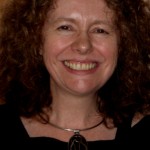
Mary Collins, Elementary Principal, Deputy Head and visual arts teacher at Bandung Independent School, Indonesia
Based on an example from grade 5 How we organize ourselves unit of inquiry, a visual arts teacher describes how she and music teachers collaborate on assessment strategies tools.
I teach three classes of visual arts and have regular planning meetings with our music teacher, when we often focus on assessment strategies and tools. At our school we do not have scheduled drama or dance classes in the elementary school, so the music teacher and I are the only arts teachers (apart from the secondary visual arts teacher who also teaches two classes of elementary art). Our music teacher and I have always believed that if we are to develop stand-alone units, we should as far as possible use the same central idea in music as in visual arts. This helps to create an integrated learning experience for our students and also helps them to see connections between different subject areas. We do not always develop a separate stand-alone central idea because our aim is to integrate with the transdisciplinary programme of inquiry whenever possible, something which is usually possible and also desirable in the arts. However, if we cannot see an authentic connection, we do not try to ‘force’ one. Instead we may still settle for a thematic connection with what the students are doing in homeroom, while at the same time developing our own central idea to ensure that the focus is on conceptual understanding.
Over the last year, as well as trying to have the same central idea, we have been working together to design complementary reflection activities so that we are also assessing our students in a very similar way. Below is an example from the grade 5 How we organize ourselves unit. In homeroom the central idea is: ‘Governance follows systems that grant power and control behaviour’ with the key concepts Form, Function, Responsibility, and the lines of inquiry:
▪ The purpose of governance
▪ Systems of governance
▪ The responsibilities of the governors and the governed.
The related concepts are systems, power, control, decision making, legislation, freedom.
Our arts central idea is ‘The arts provide us with multiple perspectives’, with the following lines of inquiry in visual arts:
▪ Using the elements and principles of art and design in appropriate ways
▪ How art creates emotional connections
▪ The purposes of objects and images in past and present cultures
The related concepts were the same in both visual arts and music (information, interpretation, symbolism) but the lines of inquiry were slightly different in music to reflect different materials and techniques.
In visual arts the students created a piece of propaganda for the fictional country that they were developing in homeroom and in music they created a piece of music that would also be used in this country. In both subjects they viewed or listened to a range of artwork or music connected to the theme of propaganda from a range of cultures and periods. Here is the reflection sheet used in visual arts (a very similar one was developed for music).
We believe that collaboration between single-subject teachers helps to provide a coherent learning experience for our students and keeps the focus on conceptual understanding. The assessment becomes more meaningful for them and they are more likely to be realistic in their self-assessment and aware of areas in which they need to focus. We also believe that such learning engagements in the arts lead them to a deeper understanding of the homeroom central idea.
—
The article was originally published in PYP Dunia (vol 1, issue 2, October 2014) – The network of IB PYP schools in Indonesia.
—
Mary is a PYP workshop leader and has worked for eight years in a PYP school, for some of that time as a classroom teacher and PYP Coordinator. Mary is passionate about creating a culture of collaboration and integrating the arts with other areas of the curriculum.

My name is Alice a PYP Music teacher. I am new in this curriculum and would like to learn much about the connection with the units in class. I am glad to see there can be a connection to the unit- government. It will be my pleasure to take part and be able to share too what works.
Please see the tab, How to contribute at the top of the blog.
I’d like to ask is it a must have music classes separately in the PyP
Hello Mary,
I enjoyed reading about your practices and felt identify because I am the only art teacher in High School and one of my last workshops with the students was also an intervention 100% following intuition working with Music through art. It was great and therapeutic for the students!